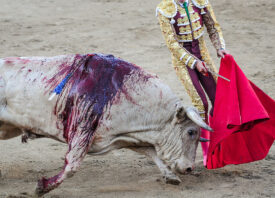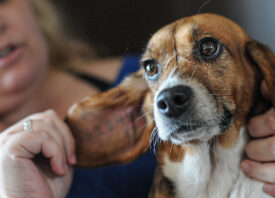Search this site
A Photographer Meets Chimpanzees Saved from Research Laboratories



In 1985, a chimpanzee was transferred from The Buckshire Corporation in Pennsylvania to The Coulston Foundation in New Mexico, where he was used for breeding and biomedical research. The studies he endured were highly invasive and some included daily “knockdowns,” frequent blood drawing, and the administering of unknown substances through injections or stomach tubes.
His name was Spock. During his time at the Coulston Foundation, he lived in “The Dungeon,” a building where chimpanzees could be found in barren cages, some emaciated and marked by scarring caused by self-mutilation. In 2002, when the Coulston Foundation closed, Spock and 266 other chimpanzees were rescued by the Save the Chimps Foundation, who would build them a sanctuary in Florida where they could live free from harm. It was here that Jo-Anne McArthur, a photojournalist and the founder of We Animals Media would meet many of these individuals years later.


At the sanctuary, Spock made friends with twenty-five other chimpanzees and spent most of his time outdoors, soaking up the sun and roaming the island landscape. While research labs are incredibly difficult to access, McArthur was able to trace the stories of these animals by meeting the chimpanzees who’d made it out alive. She created the photographs featured here at two sanctuaries, Save the Chimps and Fauna Foundation in Canada, both providing refuge to chimpanzees rescued from biomedical research.


At the Fauna Foundation, she met chimpanzees like Loulis, who loves to play chase and is known to ask humans for kisses, and Chance, who lived her first fifteen years in a baboon cage in a laboratory, alone and without other chimpanzees, before being rescued. It was in Florida at Save the Chimps that she met Ron, a chimpanzee who was born the same year she was.

Ron was used at Laboratory for Experimental Medicine and Surgery in Primates (LEMSIP), where he lived alone in a tiny cage suspended above the floor and was anesthetized with ketamine at least 105 times. During a period at the primate facility on Holloman Air Force Base (HAFB), he had a healthy disc removed from his neck. A prosthetic disc was placed into his spine and removed six months later. After the removal, Ron was not given pain medication for eight days. When he was given meds, it was only a small dose of ibuprofen, not enough for a chimp his size. Like Spock, Ron also spent time at the Coulston Foundation.

At the sanctuary, McArthur met Ron in his room, where he built a nest every day. He was free to go outside as he wished, but he was most comfortable in his room. He died there in the fall of 2011, just months after that visit.
Spock passed away suddenly and peacefully three years later, almost thirty years after he first arrived at the Coulston Foundation, during another one of the photographer’s visits to Save the Chimps. Spock’s hands and feet were painted and pressed onto paper as a memento and tribute to his life. As with every chimpanzee who passes away at the sanctuary, he was mourned with a ritual, and staff members had the opportunity to stand with him and say goodbye. He was survived by his three children, Bart, Angie, and Grace.


After Save the Chimps transferred all the chimps who had once lived at Coulston to their sanctuary, they sold the facility. They did so with the clause that it could never again be used for animal research. This story is part of a series of articles on Feature Shoot about the We Animals collection, a world-class stock site comprising more than 10,000 images and videos from animal photojournalists working around the world. You can support their work by making a one-time donation here, or you can become part of We Animals Allies here.

